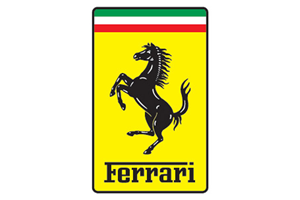


This edition of the Ferrari 250 GT SWB 3.0 V12 is the 4 speed / Manual version and was first brought out in 1959. This was at around the same time as the introduction of the 1959 Ferrari 410 Superamerica Series 3 and the 1959 Aston-Martin DB4 GT Zagato.This particular Ferrari 250 has a 2953cc Naturally Aspirated Petrol powerplant with 12 cylinders in a V formation.
The 250 shares its Petrol V12 engine configuration with the likes of the 2021 Aston-Martin Valkyrie Spider 6.5 V12 and the 2021 Aston-Martin Valkyrie Coupe 6.5 V12. If you're looking for other fast cars which share the 250's Rear Wheel Drive, Coupe combination then how about the 1982 Fiat X1/9 1.5 8V or the 1965 Aston-Martin DB6 1965.
Weighing in at 957 kgs (2109 lbs) this makes the Ferrari 250 GT SWB 3.0 V12 in the same weight category as the 2014 Radical RXC 3.7 V6 or the give or take 50kg.
![Toyota Corolla GR Morizo Edition 1.6 Turbo - [2023] image Toyota Corolla GR Morizo Edition 1.6 Turbo - [2023] image](/editionimages/2397.webp)
The Ferrari 250 shares the same bhp with the 2023 Toyota Corolla GR Morizo Edition 1.6 Turbo (300 bhp)
In terms of power the 2953cc 24V V12 engine produces 276 bhp (205 kW) @ 7000 rpm similar to the 2023 Toyota Corolla GR Morizo Edition 1.6 Turbo (300 bhp) or the 2023 Porsche Cayenne Coupe E-Hybrid 3.0 V6 Turbo (300 bhp).
The Naturally Aspirated V12 throws out 192 lb-ft (260.3 Nm) @ 6000 rpm placing it with cars of similar torque performance figures such as the 2020 Audi A1 A1 Sportback 35 TFSI S tronic S line (184 lb-ft) or the 2020 Abarth 695 70th Anniversario 1.4 Turbo (184 lb-ft).
If one combines the weight with power or torque performance for the Ferrari 250 you can get a better idea of it's real world performance.
![Nissan Skyline GTR R35 - [2012] image Nissan Skyline GTR R35 - [2012] image](/editionimages/1073.jpg)
The 2012 Nissan Skyline GTR R35 (313.2 bhp per ton) has similar Bhp Per Ton stats as the Ferrari 250.
The Ferrari 250 has a Power to weight ratio of 288.4 bhp per ton and 200.6 lb-ft per ton. Bhp Per Ton figures of the 1959 250 competing with the 2012 Nissan Skyline GTR R35 (313.2 bhp per ton) or the 2020 Ford Mustang Shelby GT350R 5.2 V8 (313.0 bhp per ton).
If you agree with the late great Carroll Shelby then arguably an even better indicator of potential performance, Torque. Use weight as well and you end up with - Torque per ton, with the Ferrari 250 generating around 200.6 lb-ft per ton. If you're curious as to what other cars have as much torque to weight then look no further than the 2011 Holden Commodore SS 6.0 V8 (225.6 lb-ft per ton) or the 1965 Ford Mustang Hardtop 289 4.7 V8 (225.5 lb-ft per ton).
With a 0-60mph time of 7.00 secs or a 0-100km/h (0-62mph) of 7.2 secs, this made the Ferrari 250 GT SWB 3.0 V12 as fast as the 2020 Alfa-Romeo Giulia 2.2 16v Turbo Diesel (7.00 secs) the 2015 Mazda MX5 2.0i Roadster Coupe (7.00 secs) the 2013 Seat Leon SC 1.8 FR Start-Stop DSG (7.00 secs) the or the 2012 Volkswagen-VW Golf GTi Cabriolet DSG (7.00 secs). This Ferrari 250 GT SWB 3.0 V12 is also faster than the 2018 Abarth 595 Turismo 1.4 Turbo (7.10 secs) the 2013 Land-Rover Range Rover Sport 3.0 SDV6 (7.10 secs) the 2012 Lexus ES 350 (7.10 secs) the and the 2011 Abarth 500C Essesse 1.4 Turbo (7.10 secs).
When talking about the performance of the Ferrari 250 on the drag strip it can reach a quarter mile in an estimated 12.48 secs @ 109.6 mph. Similar performance down the quarter mile can be found with the the 2017 BMW 2 Series M240i xDrive (12.42 secs), the 2017 Seat Leon SC Cupra 300 DSG (12.42 secs), and the 2008 Maserati GranTurismo S 4.6 V8 (12.44 secs).
Modern performance cars are often artificially restricted to 155mph. The 1959 version of the Ferrari 250 GT SWB 3.0 V12 has a maximum speed of 150mph.
If maxing out your car on the AutoBahn is your thing and you're wondering what's faster than the 1959 Ferrari 250 GT SWB 3.0 V12 then how about the 2013 Porsche Panamera Diesel 3.0 V6 Turbo (161 mph), the 2013 Porsche Panamera 3.6 V6 (161 mph), or the 2011 Radical SR3 SL 2.0 Turbo (161 mph).










Ford Focus ST-3 2.0 Turbo Estate
Engine: Turbo Petrol | 1997cc 16v St4
Top Speed: 154 mph
0-60mph: 6.50 seconds

KIA Pro Ceed GT 1.6 Turbo
Engine: Turbo Petrol | 1591cc 16v St4
Top Speed: 230.1 kph
0-100kph: 7.6 seconds



















